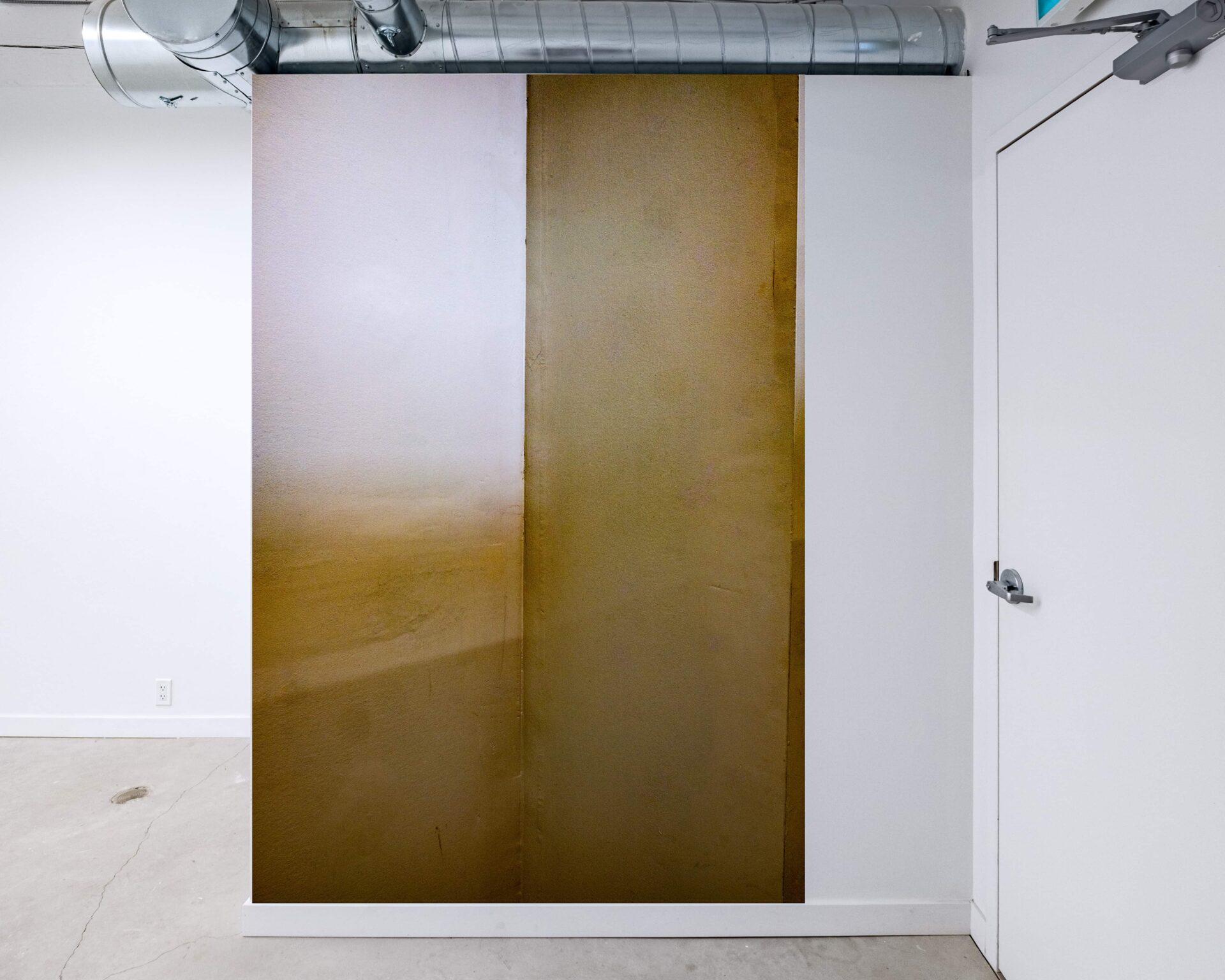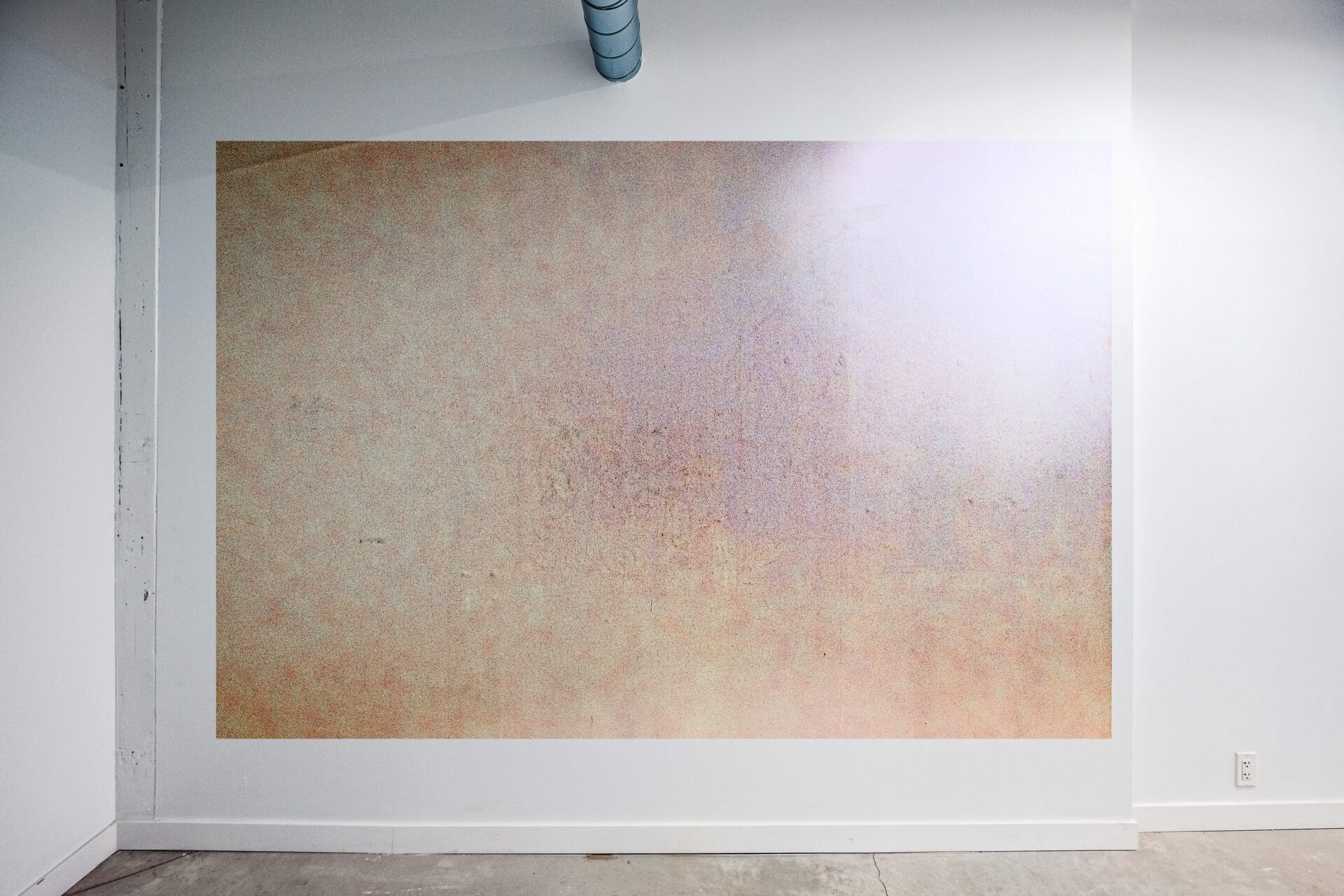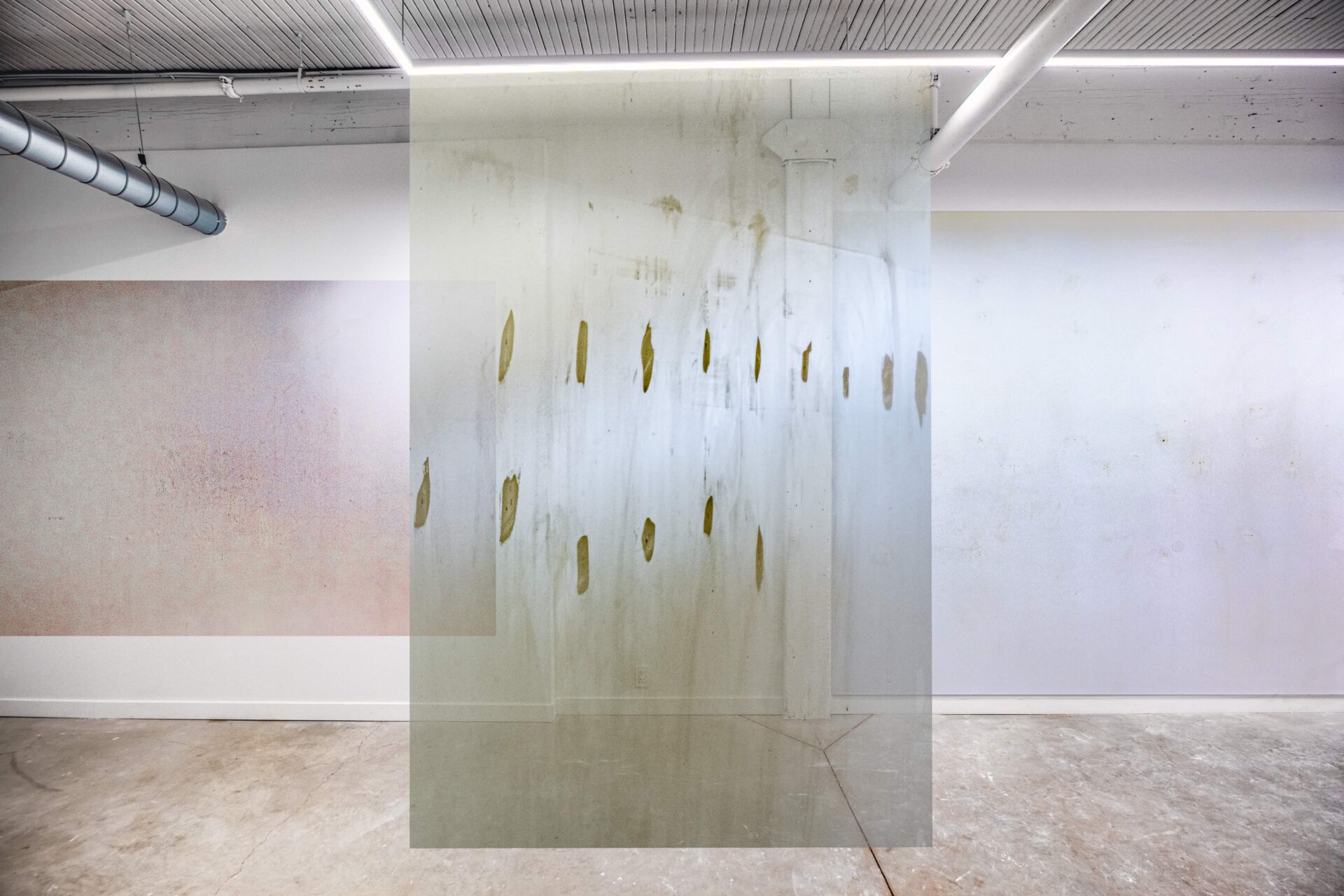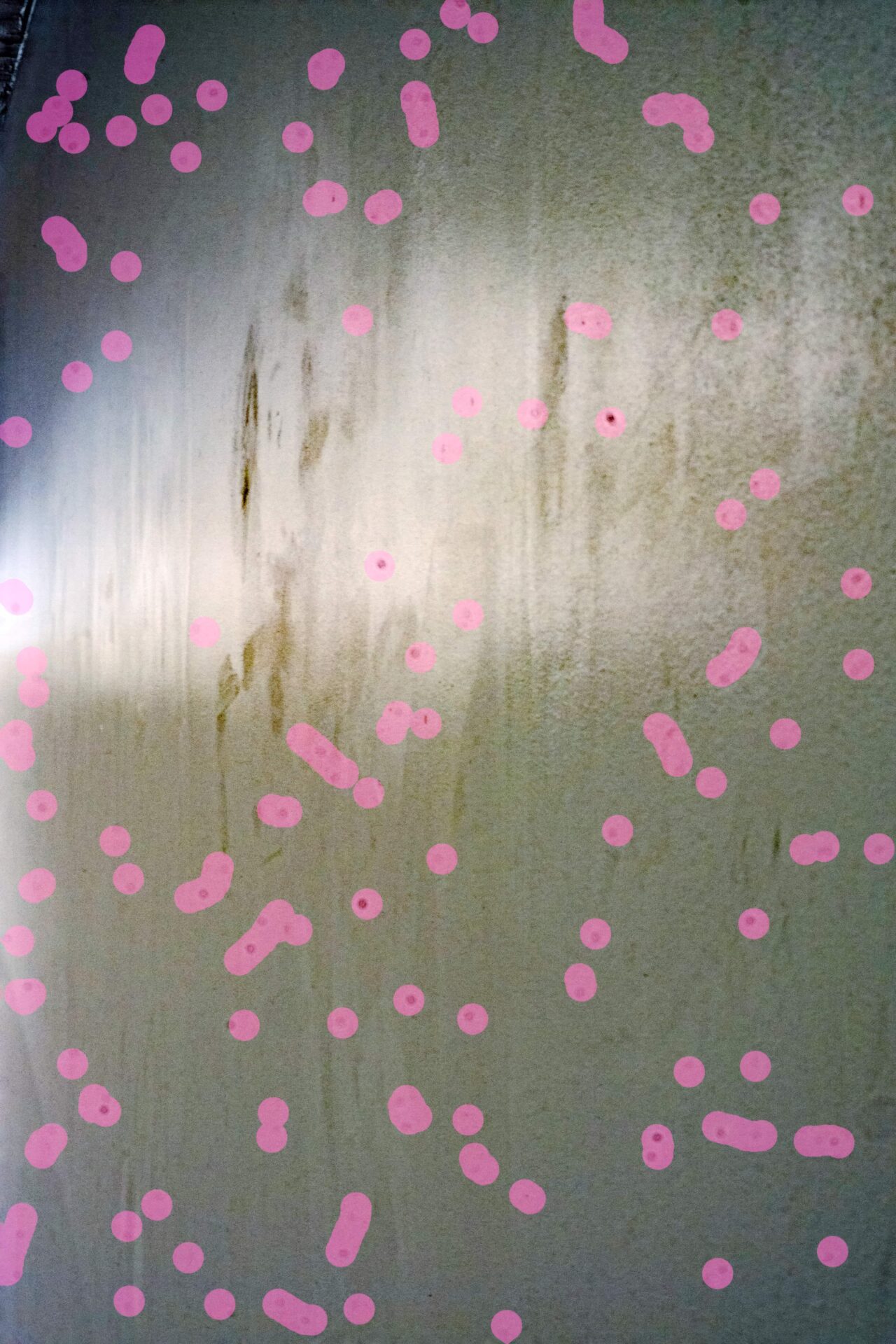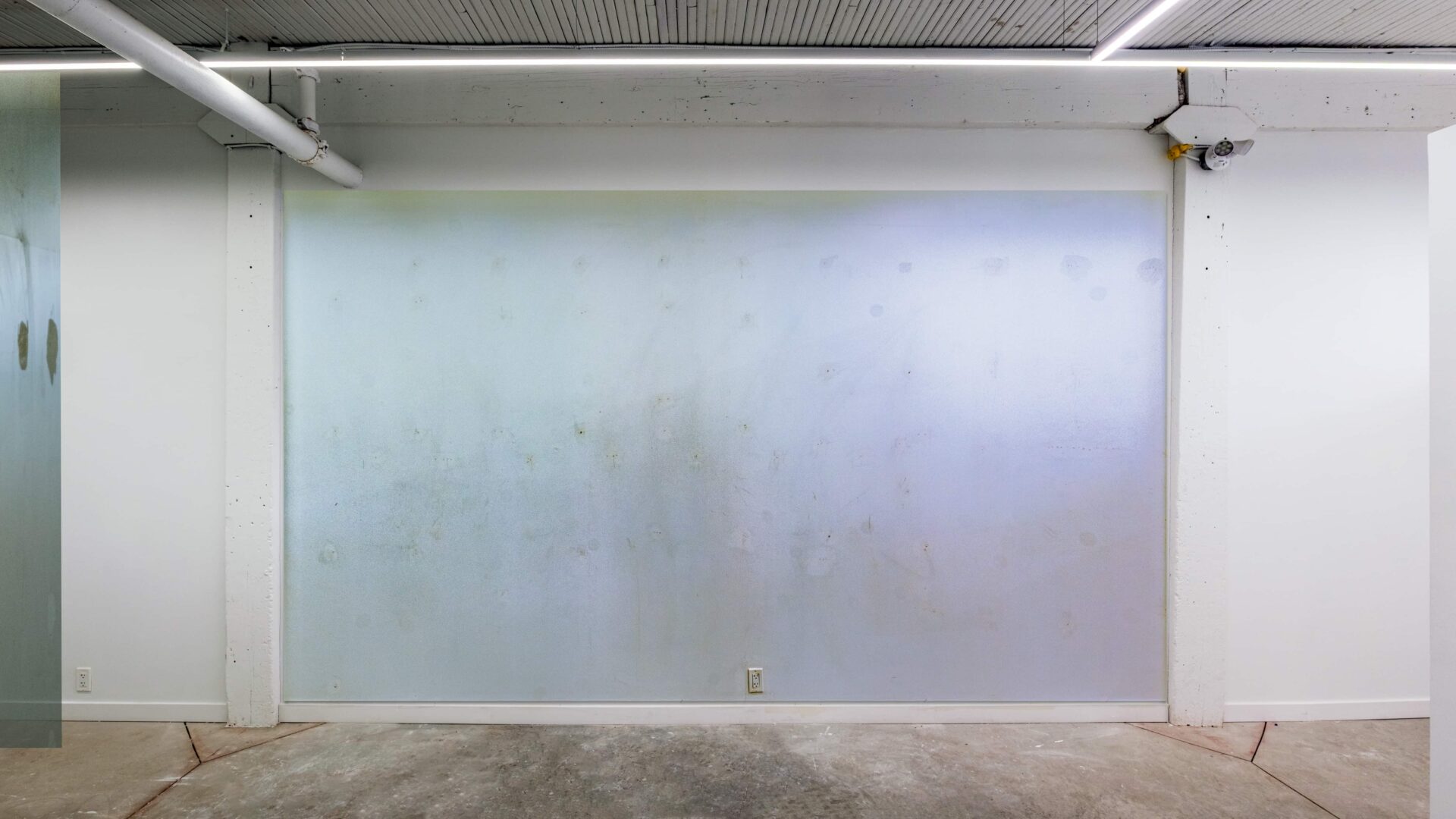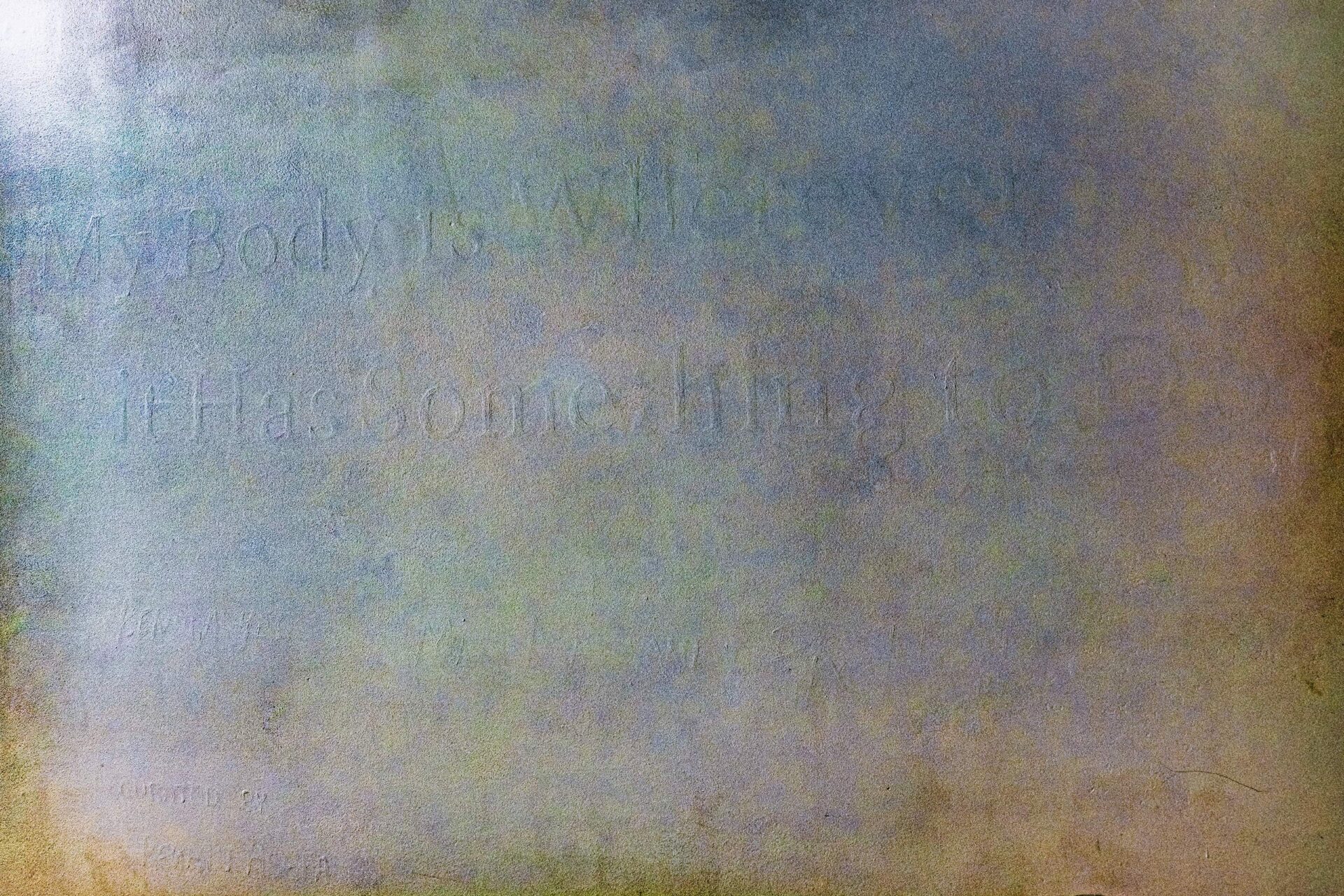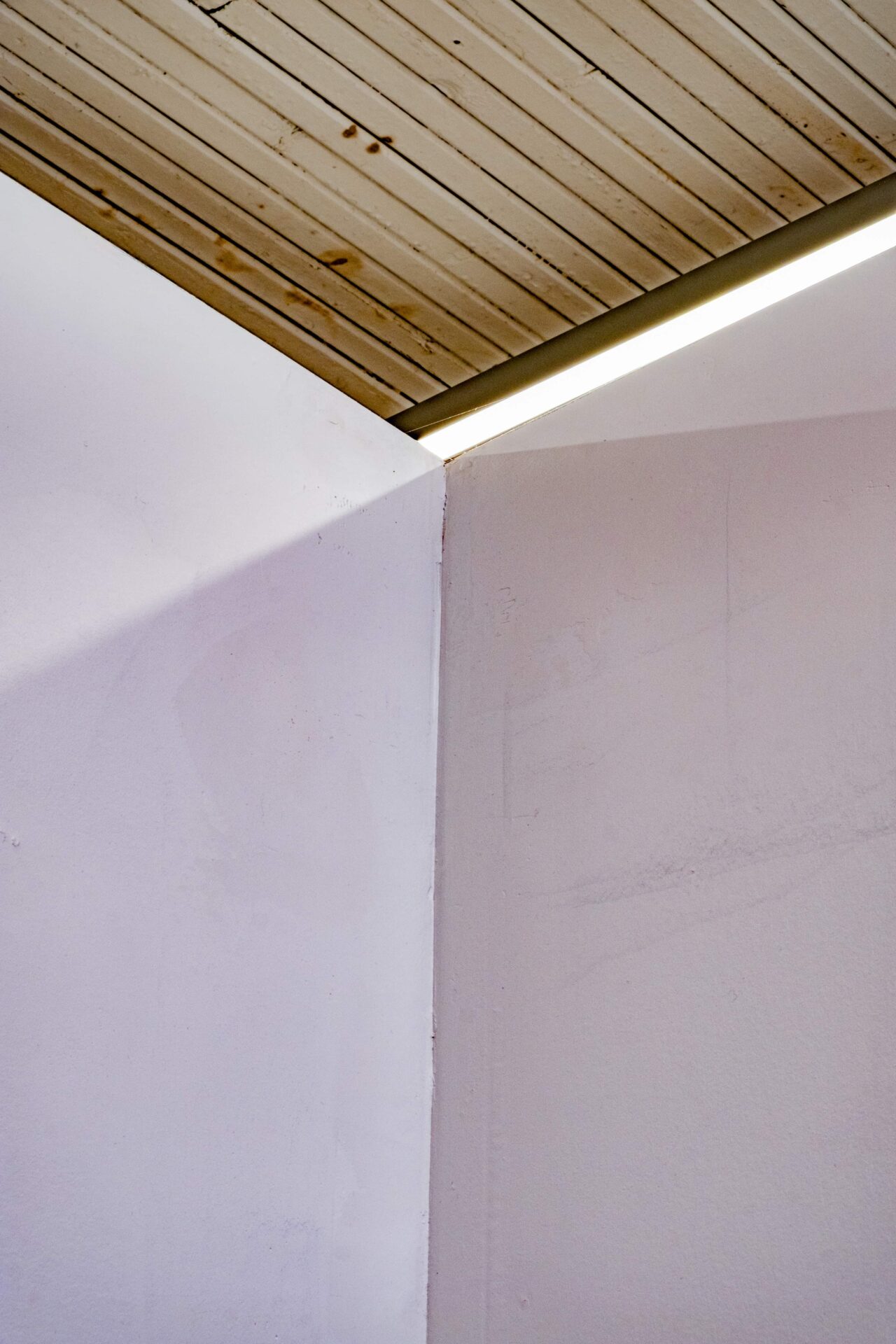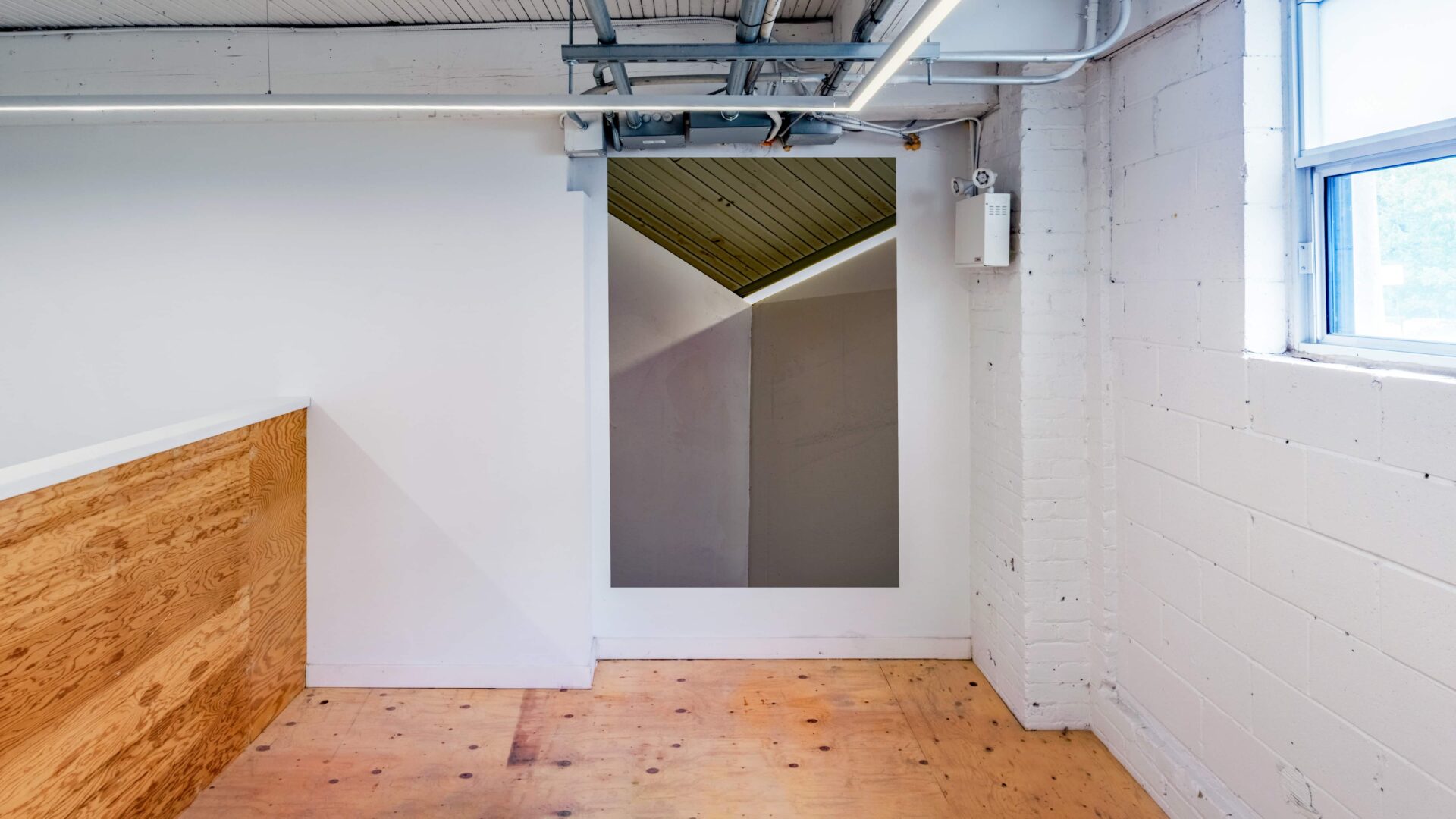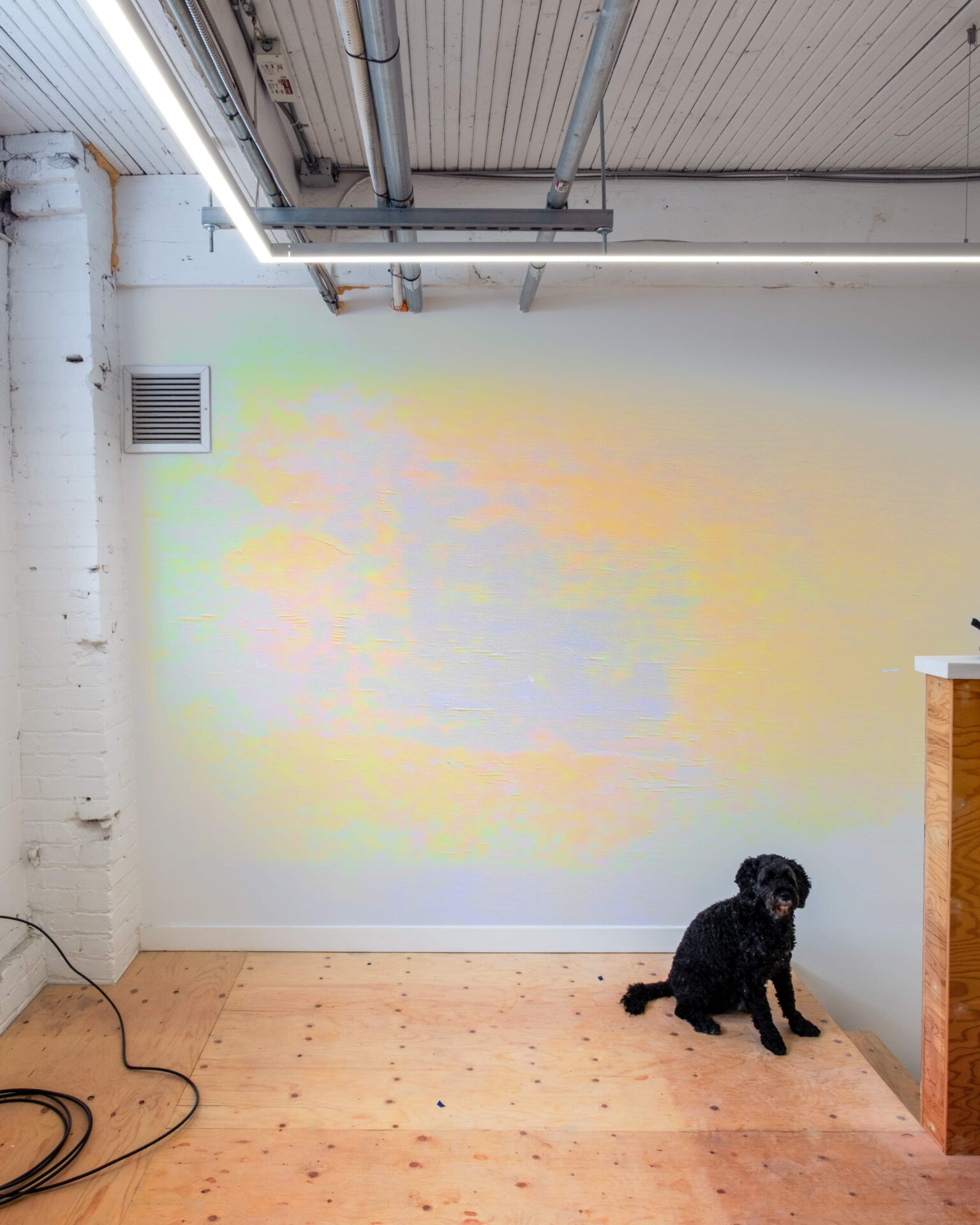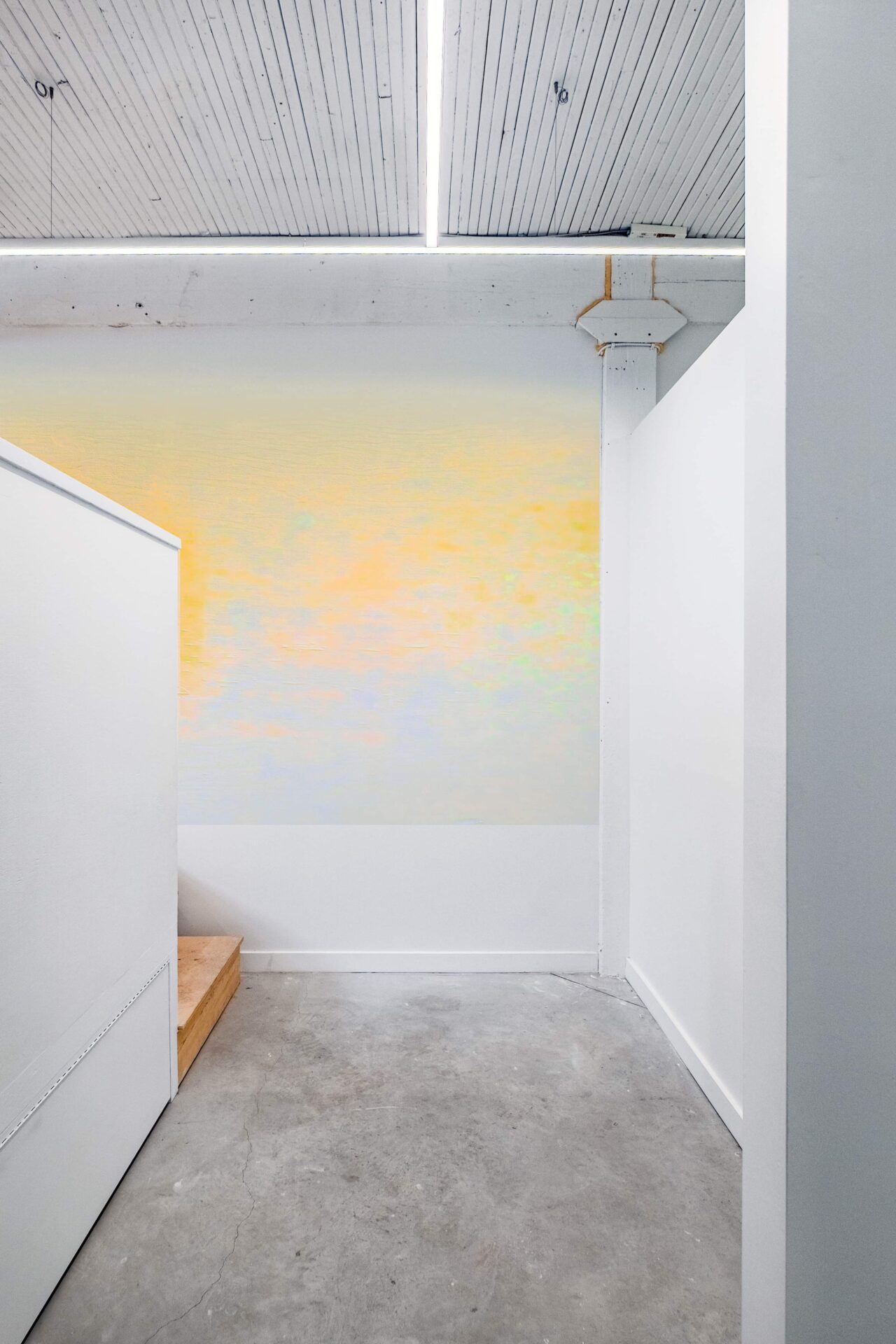Ejected Bodies
a site specific digital exhibition
by Alex Fischer

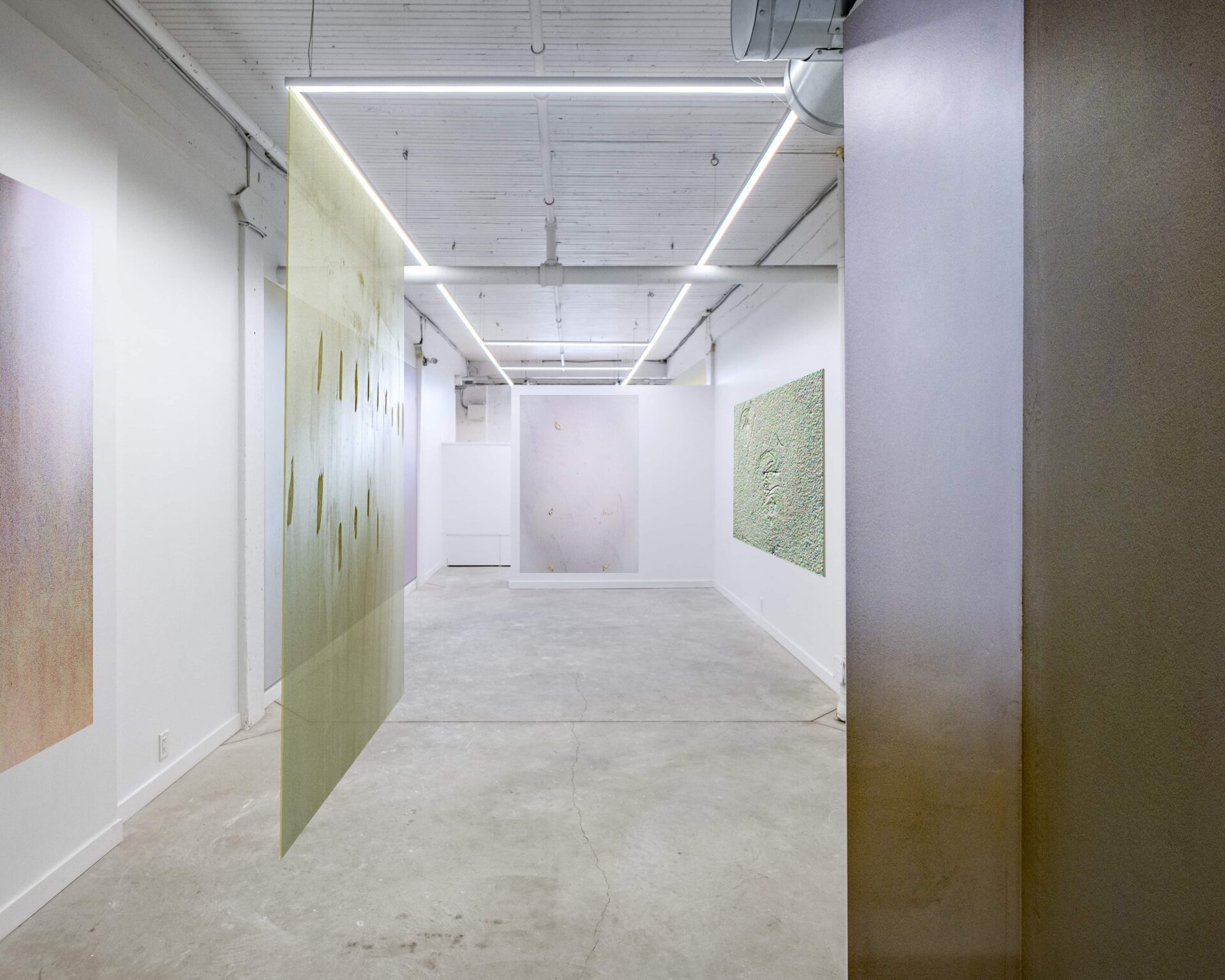
Statement
Between 2022 and 2025, NAMARA’s project space at 103–915 Dupont Street hosted a cycle of exhibitions, performances, and residencies. Over time, as in any working gallery, its walls accumulated subtle traces: patched holes, rubbed paint, faint dust shadows. Normally erased before each new opening, these became the final material of attention. After the space was vacated, its emptiness was photographed and then digitally staged to resemble a new exhibition. Nothing was installed. Ejected Bodies is an exhibition that exists only as its own record.
What is encountered here is not absence but a condensation of time. The walls hold at once the years of activity, the final moment of vacancy, and the translation into image circulation. Surfaces slip between registers: gradients read like color-field paintings, patched drywall echoes evidence photography, gold-toned planes resemble oxidized metal, faint yellows dissolve into light. A blemish becomes a brushstroke, a scuff becomes atmosphere. To view them is to recognize the familiar vocabularies of contemporary display, the large-format print, the wide-angle frame, the cool lighting of the white cube, yet to know that nothing was ever there.
The project belongs less to the discourse of 1970s dematerialization than to a contemporary economy of simulation. As Boris Groys has argued, the copy now precedes and replaces the original; circulation rather than presence has become decisive. The encounter resonates with Mark Fisher’s account of hauntology, in which the present is permeated by what never fully arrives or disappears. Here the exhibition is already archived at the instant it appears, spectral by design.
There is also a politics at work. The gallery’s rent doubled during its tenure, an index of how quickly cultural activity is converted into speculative value, even as the very sites that produce it are displaced. The hidden labor of upkeep: patching, painting, and cleaning has been monumentalized as subject matter. What is usually erased becomes central, that we had presence is what gives certain space value, as evidence here transformed into aesthetic surface. Ejected Bodies carries this condition to its limit: the exhibition is not emptied but displaced into the network, into what Geert Lovink describes as the post-internet condition, where documentation is not secondary to an event but is itself the event.
The exhibition does not mourn what was lost. It studies what remains. What survives of a space when the work is gone is not just the trace –it is the story told about the trace, and how that story circulates. The photographs do not merely record the empty gallery; they reshape it into a stage where attention, memory, and format perform together. These aren’t placeholders or proofs. They are what we now recognize as an exhibition: images that behave like events, files that act as anchors for experience. The shift is subtle but total. Rather than asking what happened in the room, Ejected Bodies asks what kind of presence is created when there is no room left. It invites the viewer to notice how contemporary art so often exists where documentation becomes indistinguishable from intent, and where circulation defines the work more than installation ever could. In a culture shaped by compression, eviction, and acceleration, what counts is not what can be preserved in place, but what can move, return, and persist across contexts. The space has ended, but the exhibition has not. It continues wherever its images are held, opened, read, and folded into the rhythm of now.
— images and text by Alex Fischer, August 2025
Groys, Boris. Art Power. Cambridge, MA: MIT Press, 2008.
Fisher, Mark. Ghosts of My Life: Writings on Depression, Hauntology and Lost Futures. Winchester: Zero Books, 2014.
Berardi, Franco (“Bifo”). The Uprising: On Poetry and Finance. Los Angeles: Semiotext(e), 2012.
Berardi, Franco (“Bifo”). After the Future. Oakland: AK Press, 2011.
Lovink, Geert. Networks Without a Cause: A Critique of Social Media. Cambridge: Polity Press, 2012.
Lovink, Geert. Sad by Design: On Platform Nihilism. London: Pluto Press, 2019.
